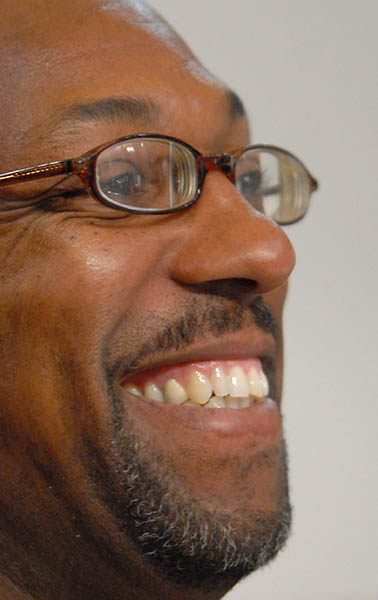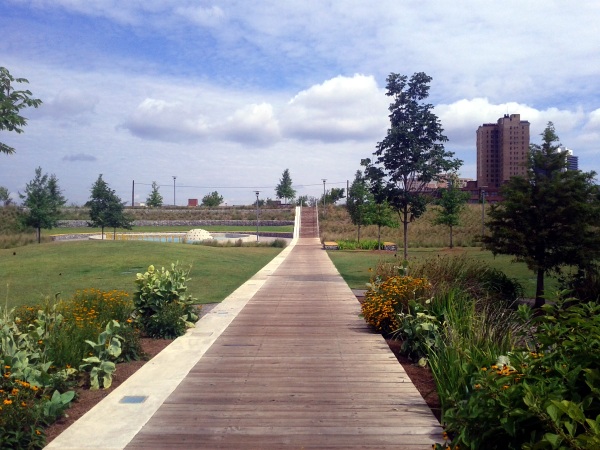 The past 24+ hours have seen many heads shaking and hitting brick walls or palms of hands as citizens of Birmingham, AL and the surrounding community are left wondering about yesterday’s Birmingham City Council decision involving a vote on zoning for a senior housing development to be built in Pratt City.
The past 24+ hours have seen many heads shaking and hitting brick walls or palms of hands as citizens of Birmingham, AL and the surrounding community are left wondering about yesterday’s Birmingham City Council decision involving a vote on zoning for a senior housing development to be built in Pratt City.
Council President Roderick Royal implored his fellow councilors to delay a decision for three weeks as he made his case to move the project from its proposed site due to concerns about it being in “a known path” of a tornado. The nearly 1 hour portion of yesterday’s meeting and the resulting vote (8-1 to delay for three weeks) has led to some passionate commentaries in both Weld for Birmingham and the July 11 edition of The Birmingham News.
Both Mark and John made so many valid points, so all I can do is take it one step further by pointing at cities like Greensburg, KS and Joplin, MO and ask if those rebuilding efforts are foolish? Maybe we shouldn’t be pushing recovery efforts in New Orleans, or Galveston, TX, or Charleston, SC? Considering I’m a native New Yorker… no, I won’t go there.
It’s interesting when you consider just a few months ago there were some folks a few hours north might have considered Royal a voice of reason thanks to a blog post.
ChicagoNow’s White Sox Observer, Chris Lamberti, published a post in March about the Council’s decision to support construction of the soon-to-be home of the Birmingham Barons, Regions Field, across the street from Railroad Park. In it, he points to Royal questioning the vote to publicly finance the project as the voice of reason.
There are a few things that need to be cleared up based on what was mentioned in that post though. The $60 million+ price tag always mentioned always includes construction of a Negro League museum adjacent to the park. The construction of the museum never seems to be questioned, even though the existence of the National Negro Leagues Baseball Museum in Kansas, City, MO (as we mentioned back in 2008 when the idea for such a facility was first brought up on a City Council agenda) seems to make it more of an “it’d be nice to have” than a “we’d have something unique” amenity for the city. This doesn’t even take into account the fact that the facility in Kansas City was designated as the national museum by Congress back in 2006, so we’ll be competing with a facility that draws 60,000+ visitors a year located in the city that served as headquarters for the Negro Leagues…
The author also only points to one city in the state of Alabama for his argument about new ballparks failing in downtown areas. There was no discussion of Montgomery’s Riverwalk Stadium, a renovation of the city’s roundhouse or a look at the Huntsville Stars’ home, Joe W. Davis Stadium. It may have helped (or hurt) the contention about downtown development based on ballparks, but whether a project is successful or not, it takes a lot longer than people think, despite our desire to see things happen yesterday.
It may have helped if there was a closer look taken at the underlying philosophy of encouraging development that spurs retail and commercial being the unfair taxation system currently in place in Alabama (thanks in part to its state constitution – the longest in the world). The idea that more retail establishments would provide more revenue makes sense when you know that’s how the state generates its revenue – rather than a system more reliant on property taxes. It does exactly what it’s supposed to do, though it’s tough for a community suffering through The Great Recession to want to spend money on what many would conceive as a luxury item.
All of that is to suggest that while the council president might have been informed of additional information in both cases, it wasn’t quite clear to a lot of us exactly how he drew his conclusions. If there’s another factor more reasonable to consider for moving the location of a project that would be federally funded, it would help the public if it were shared instead of operating in the realm of the “we know more information that you do” approach alluded to during yesterday’s debate. The electorate votes officials into office not because they know better, but because we trust they will do the right thing and inform their constituents accordingly. Those are actually two distinct statements.
If “The People Are The City” as we suggest via the phrase hanging on the inside of the door of the council chambers, you need to trust the people – on both sides of the equation. Maybe we need to recreate that phrase on the outside of the council chambers so we’re all reminded of that fact as we enter.
André Natta is The Terminal’s stationmaster.
Photo: Roderick Royal in 2007. Bob Farley/f8photo





 The past 24+ hours have seen many heads shaking and hitting brick walls or palms of hands as citizens of Birmingham, AL and the surrounding community are left wondering about
The past 24+ hours have seen many heads shaking and hitting brick walls or palms of hands as citizens of Birmingham, AL and the surrounding community are left wondering about 



How are other cities handling food trucks?
Food trucks are here to stay; the question is how they’ll be handled.
The recent issue of food truck regulations has found me looking around online for the past few days to see if we’re alone on this issue. The findings – not even close to being alone. Food truck regulation is apparently a big issue in several cities right now. This week for example, Portland, ME and Chicago, IL will attempt to pass new ordinances aimed at making both sides agreeable, with neither side necessarily declaring victory so far.
A couple of things took place last week providing insight into how crazy the food truck issue is in several cities right now. It should help those involved come up with a good solution for all.
The first event happened on July 9 as Chick-Fil-A rolled out their new food truck at Farragut Square in Washington, DC. According to a post on “All We Can Eat,” The Washington Post’s food blog, the truck had been planned for some time (it was supposed to debut in April and was seen in May and June around town) and underwent a design change before its apparently successful relaunch on the streets of the Nation’s Capitol. Incidentally, one of the reasons cited by Chick-Fil-A for introducing the truck in the piece is their lack of physical locations in metro DC (one actually – on a college campus). The ability to gauge interest in eventually opening brick and mortar establishments was what the head of DC’s Small Business Administration pointed out in a recent interview.
By the way, DC Mayor Vincent Gray introduced a new ordinance in January that would among other things allow food trucks to stay parked in one spot instead of needing to be “hailed” like a cab in order to conduct business. It would also dictate the hours they would be allowed to operate in the District.
Thursday, July 12, saw a the spotlight focused on food trucks… in Chicago. Our friends at Gapers Block were one of several media outlets writing about the first ever Chicago Food Truck Day. The event was organized in advance of the upcoming July 19 hearing involving that city’s new food truck ordinance that would among other things finally allow operators to cook on board. The Chicago Tribune reports they’d also have to install GPS devices to allow the city to track them, making it easier to enforce a two-hour parking limit at any one location while being able to operate 24 hours a day.
Chicago’s municipal legislation has been stalled out for at least a year according to most reports and it’s not come without its share of debate, including an interactive debate presentation over on The Huffington Post. It should calm folks looking at Birmingham’s current situation and the discussions surrounding a rewrite of local laws to accommodate the growing industry that others are tackling it as well.
Specifying distances is not necessarily new – Chicago is asking for a 200 ft. distance from the front door of brick and mortar restaurants; incidentally, Portland, Maine’s asking them to be 65 feet away after hours while actually being more restrictive during the day in their proposed ordinance (scheduled for a vote later on today – Monday, July 16).
There have also been some successes so far. Boston (as usual) has found a way to make it hip and cool, even creating a page on their website letting people know which trucks are out and where they’re located as well as a streamlined page for applying for the requisite permits. This while they’ve instituted a lottery system as part of their process. The folks in Memphis are talking about how successful their ordinance (PDF) has been – becoming a lucrative opportunity for several operators shortly after its passage last spring.
Hey, at least we’re not in Clearwater, FL, where they have no intention of adapting their ordinances to accommodate food trucks any time soon. Those willing to talk about the negative long term effects may want to look at what problems developed in Raleigh, NC some ten months after their battle over their food truck ordinance (PDF) – none.
Time will tell what happens here. There appears to be folks willing to work together and a community that’s willing to support whatever decision is reached. With several cities going through the same situation right now, hopefully it will calm folks down while also giving everyone an idea of what’s working and what’s not.
3 Comments
Posted in Birmingham, Commentary
Tagged Birmingham, Chicago, comparison, downtown, food truck, introduction, ME, ordinance, Portland